8 Great Tips For Success: Surf Fishing With Jerkbaits
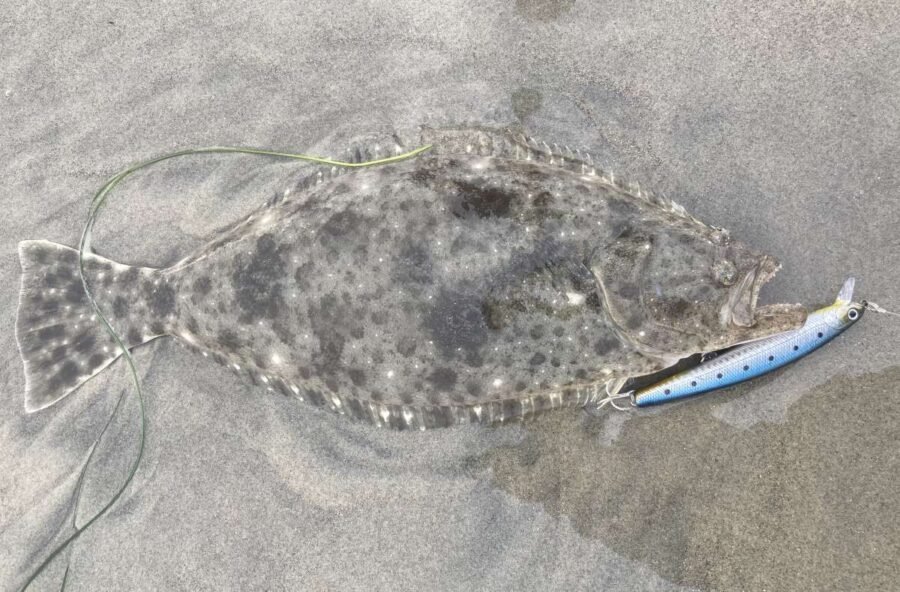
Surf fishing with jerkbaits is much more complex than the more traditional Carolina rig style. If you’ve struggled with the transition of fishing with lures in the surf and consistently catching fish, this article is for you. These 8 tips have helped me catch fish more consistently and I’m confident they’ll help you.
1. Balance The Lure
What many people don’t know about jerkbaits is that the weight system housed within them serves more than one purpose.
If you’re using a quality jerkbait like the Shimano WM 115 or the Lucky Craft FM 110, the weight system is designed to serve a purpose during the retrieve as well as prior to the cast (and during the cast). The weight system is what allows the jerkbait to dive at the specified depth, but it should allow you to do what’s called “balancing the lure” prior to casting.
Just before you cast, give your lure a shake or a twitch – almost as if you were trying to shake the seaweed off your treble hooks. This should cause the weights to roll back in the lure, putting the lure in it’s designed/optimal casting position.
If you’ve ever noticed how sometimes your jerkbait will flutter and not go very far on some casts, but on others it rockets off in a streamlined manner, a lot of that has to do with how well the weights were balanced prior to casting. Granted much of it also comes down to the technique used by the angler and the overall execution of the technique as well as the overall quality of the lure.
Both of the previously mentioned lures keep nice tight casting form most of the time. I trust both brands and use both often.
2. Match The Rod To The Lure
You should always match your rod not only to your lure, but to your target species as well. I’ve written countless articles about which gear to use for the common species of surf fish we have in So Cal. Clicking the link to that article will allow you to see an overview of the common species we have here and by clicking each species’ individual page, you’ll learn about how to target them and what gear to use.
I also touched on this in a recent article about choosing the best line for surf fishing. And not to continue throwing links in your face, but I mean it when I say I’ve written “countless articles” about all the little things that go into surf fishing. So here’s the most popular and straight to the point article on the best gear and tackle to use for surf fishing in So Cal.
Bottom line though, most surf fishing rods have a number of specs listed near the handle. One of these specs will list the weight of the lure you should use when using that fishing rod. When in doubt, that’s a good range to go by.
If I were using either of the jerkbaits mentioned above (Shimano WM 115 or LC 110 FM), I would use an Okuma SST 8’6″ MHA rod. It’s a moderate-fast action rod which means the rod tip provides a fairly fast twitch when needed, and the line and lure weight fall right in line with what we’d be throwing.
3. Braid or Mono
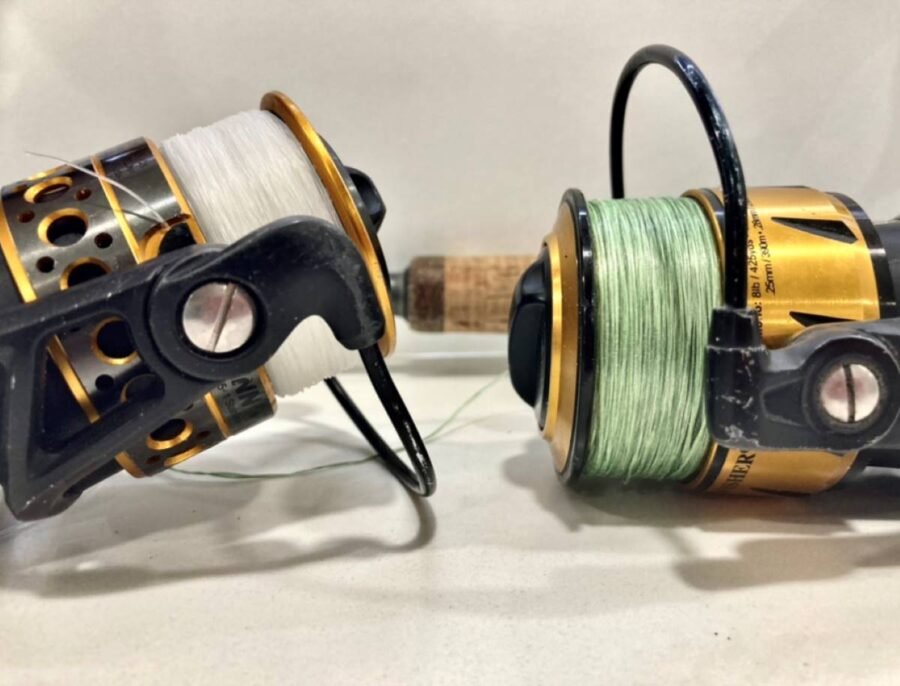
When it comes to surf fishing with jerkbaits, I don’t think your line choice is as critical as most people make it put to be. I will admit at this point, I prefer braid, but I’ll still use mono sometimes. If we’re talking swimbaits, braid is a must. But jerkbaits actually don’t require as much manually added texture within your retrieve so mono is fine sometimes.
That said, if you don’t plan on using this setup for anything but jerkbaits, you might as well throw some braid on it. I’d go with either 20 or 30-pound braid depending on your local target.
Generally speaking, braid will provide more “feedback” and sensitivity than mono. While mono will provide more stretch. The one benefit that mono has is that upon hooking a fish, the jerky head shakes and quick turns are softened by the stretch and give that mono provides. This can often be the difference between a pop-off and a landed fish.
For more on braid vs mono for surf fishing, refer to the linked article.
4. How To Retrieve a Jerkbait – Steady, Twitch, Pause
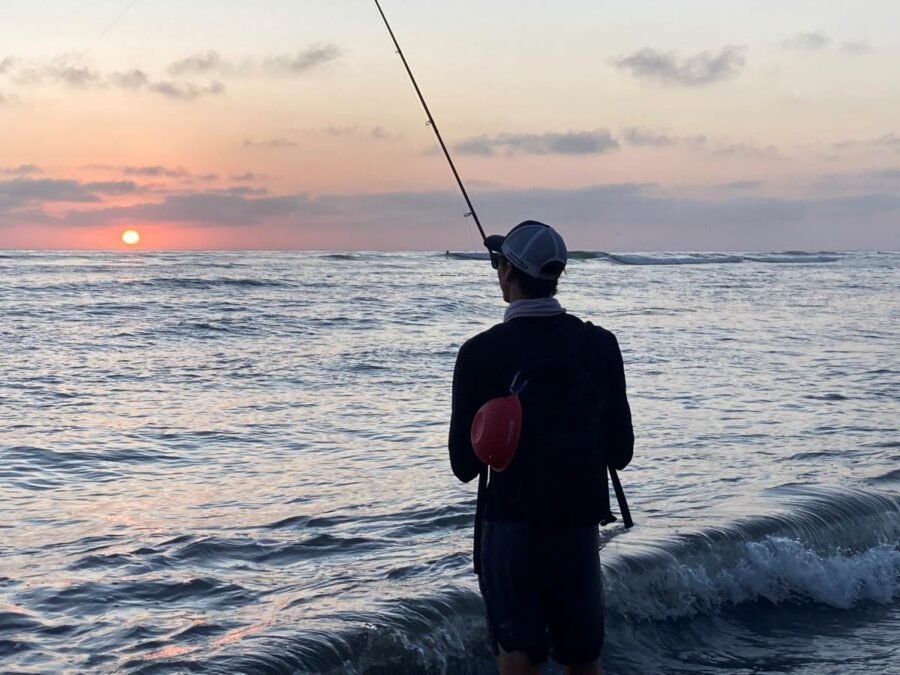
Picking the right retrieve to use while surf fishing with jerkbaits is a personal choice, usually made based on an angler’s own experience. In my experience, a slow and steady retrieve is all you need.
Slow and Steady
You should be retrieving fast enough to “feel the wobble” of your lure, but nothing faster. I see many youtubers reel too fast (in my opinion), but again, it’s a personal preference.
I recommend testing how slowly you can retrieve your lure while still feeling the wobble and then sticking with that speed for the most part.
Twitch Retrieve
While slow and steady is my go-to, at times it just feels right to put a little bit of texture in your retrieve. A quick twitch here and there is a good way to add some variety and also test the waters just in case the slow and steady isn’t enticing the fish that day.
I do believe fish can be finicky and choose different presentations at different times and on different days etc.
Getting Bit on the Pause
getting bit on the pause is legit as well. Many times, I’ve slowed down my retrieve to a pause, and just before beginning my retrieve again, “wham!” For whatever reason, paused baits do get hit. You can even combine the twitch and the pause.
At the end of the day, there’s no right or wrong way to retrieve a jerkbait. If you get bit, that’s good. I’ve just found slow and steady to work for the most part. But as I said, some days that just doesn’t work and I switch it up.
5. Location: Cast Into Danger

You know that lure you just bought for 20 bucks? Yah, that one. Throw it into those rocks over there where you see a sliver of sand resting between them. That’s where you’re going to catch halibut and chunky surfperch.
I don’t make up the rules… I just discover them and practice them. That’s what works for me, so I recommend it. You can catch big fish in sandy troughs and soft structure in general, but you won’t be as effective as you would be if you threw your lure into dangerous areas around hard structure.
If this scares you too much, skip down to tip #8.
6. Try Different Angles
The prerequisite to trying different angles is learning how to read the beach for surf fishing. After you’ve mastered the art of finding structure with your eyes and understanding what you’re looking for, you’ll typically find different zones and see what looks to be “the best angle” to fish it from.
Without a doubt, you’re gut is likely right, so try it from that angle. You might find two rocks parallel with the shore line. The natural path to retrieve your lure would be standing straight-on and casting between the two rocks and retrieving straight back.
If there are three rocks, you’re eyes will naturally find the path that runs you’re lure near the edges of as many of the rocks as possible while still allowing the lure to pass through a gap without running directly over a rock. Trust your eyes and fish that path first, but get creative and try other angles.
I still remember the day I caught my PB 31.5″ halibut. I found the structure and tried two angles. Neither resulted in a bite. I tried one more and “wham!” That was it! So stay persistent and stay confident. Trust your eyes and trust your gut and go get that PB.
7. Use The Best Jerkbaits
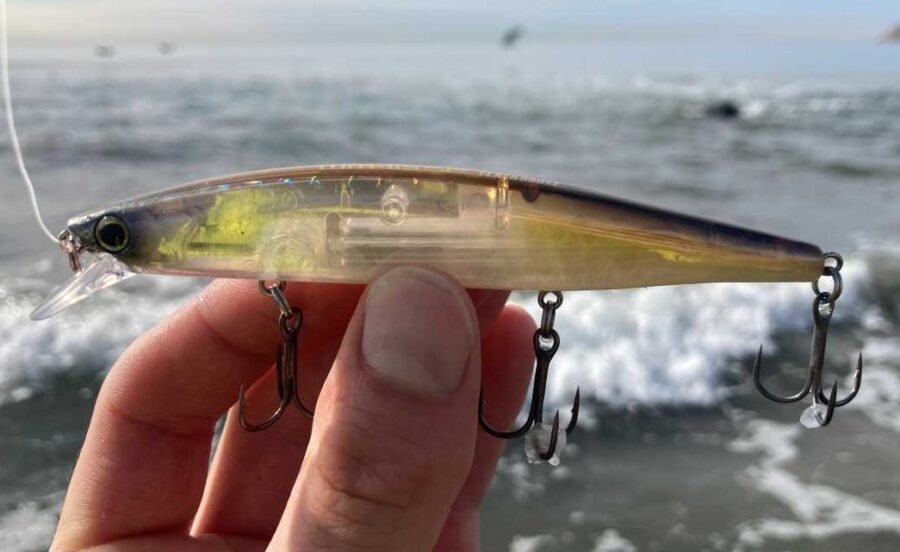
This goes without being said. If you’re surf fishing with jerkbaits, you might as well optimize your time by using the best jerkbaits for surf fishing.
That link above will overview the only jerkbaits I trust my time and efforts with. The LC and Shimano WM are easily the best on the list.
There are a number of cheaper lures that I’ve used and I’m sure other anglers have tried, but more often than not, they either flutter through the air or flip over too easily in the water. Both are bad characteristics if they occur to frequently.
8. Know When To Switch To a Swimbait
My last tip is one that I wish I knew about earlier. There’s a big difference between jerkbaits and swimbaits. When I say, “throw your lure where you think you might lose it”, I mean it. So, there does come a point when jerkbaits just aren’t fit for the structure you’re fishing.
The more kelp and reef there is, you’re more likely to snag and lose a jerkbait. Using weedless swimbaits for surf fishing on the other hand are a much better option when it comes to this kind of structure.
Like many topics within the realm of surf fishing, I’ve written a number of articles about surf fishing with swimbaits. Check out the article linked here and shown below covering the best swimbaits for surf fishing.

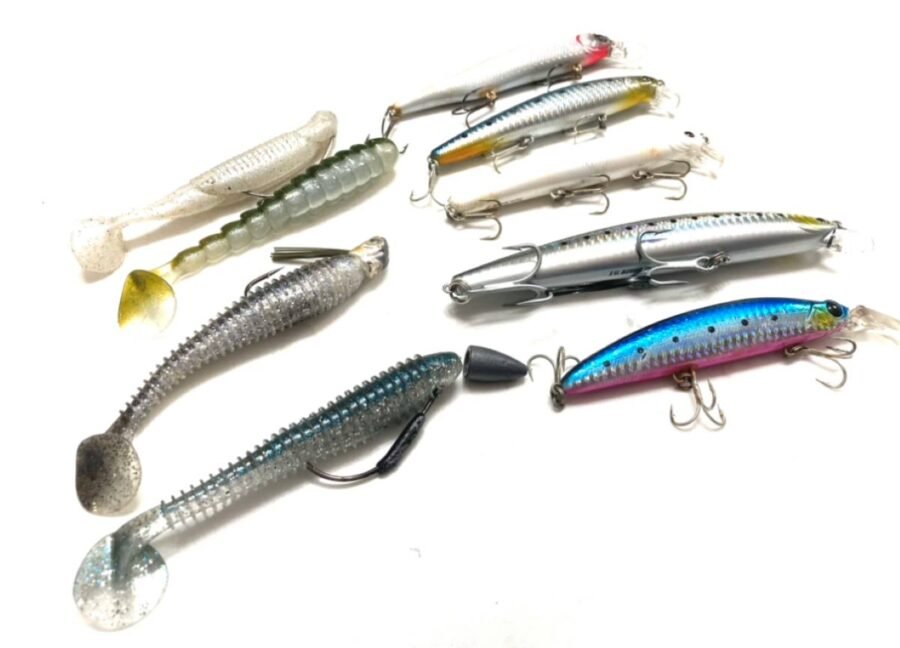
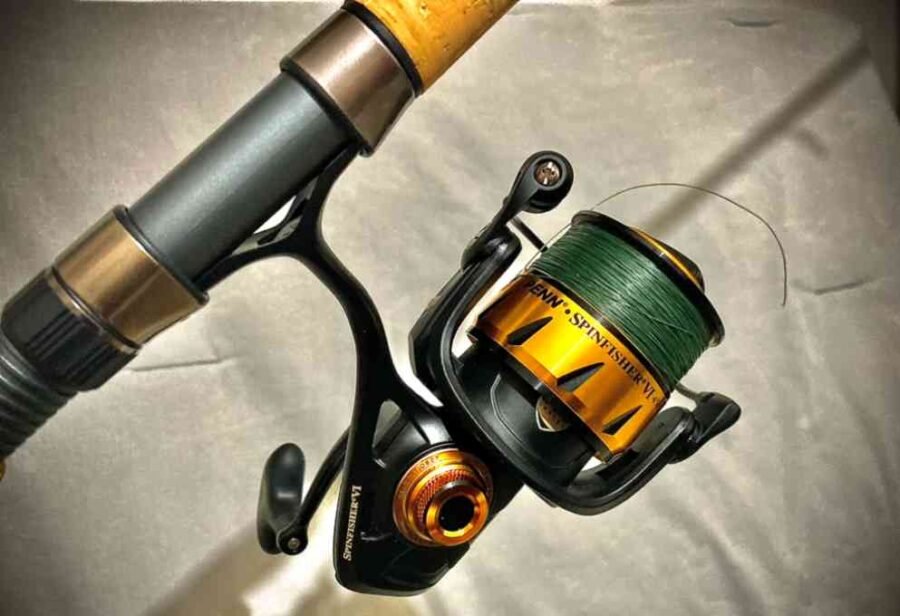
As always Nick, enjoyed reading the article
Thanks! Goodluck this season!
Great article, Nick. I look forward to fishing with you.
Likewise!